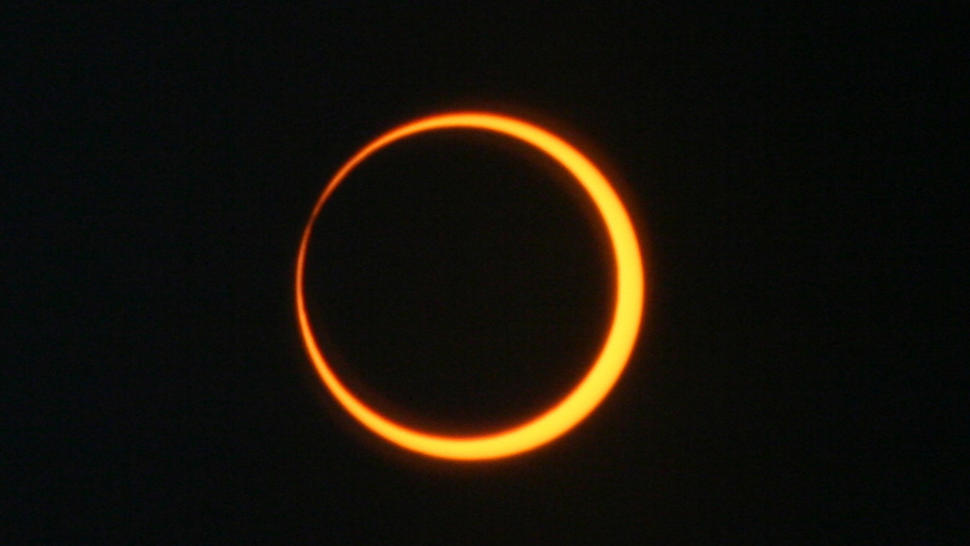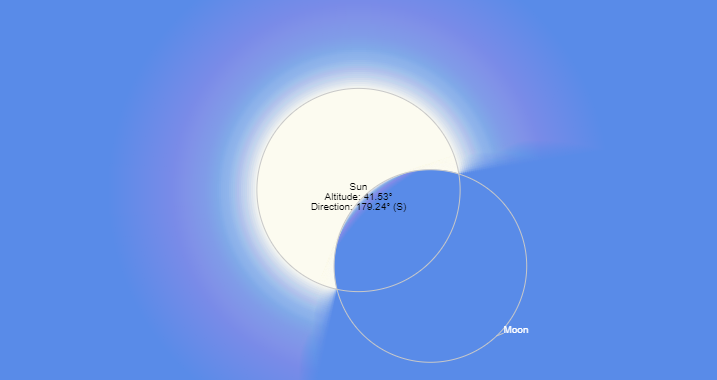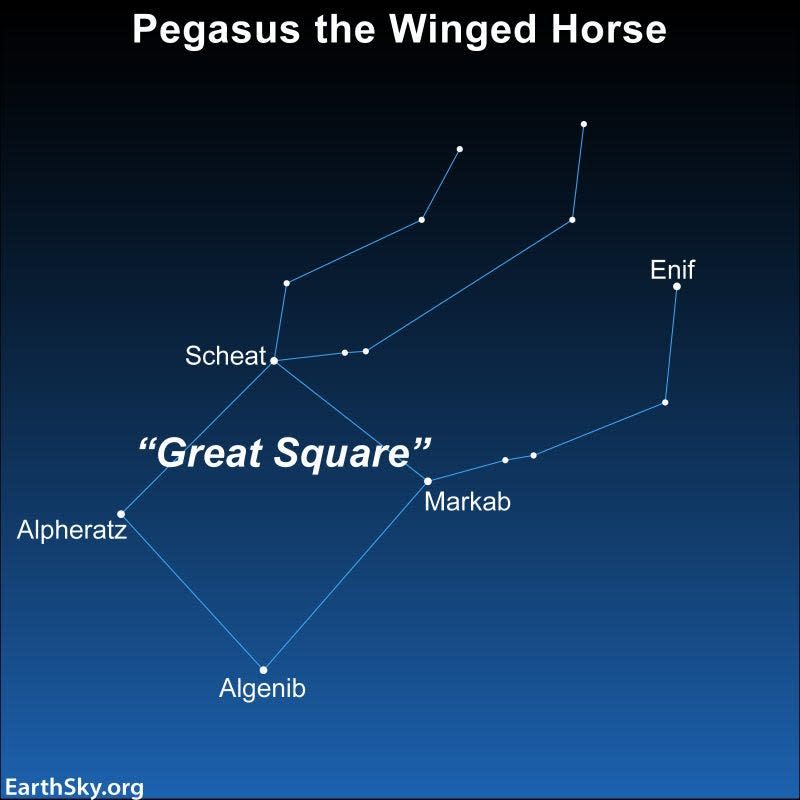Partial annular solar eclipse over Ohio on Oct. 14. What to know about seeing it

We have two awesome celestial events coming up over the next six months. The first will be the annular solar eclipse on Oct. 14. The annular eclipse will be our dress rehearsal for the big event – the total solar eclipse on April 8, 2024.
What is the difference between the annular solar eclipse and the total solar eclipse?
The Moon’s orbit around Earth is slightly elliptical. So sometimes it is a little further from the Earth, and other times it is closer. During the October eclipse, the Moon will be at its furthest point from Earth and the umbral shadow won’t reach the Earth’s surface. The antumbra, which extends beyond the umbra, will touch Earth. Therefore, the Moon will not cover the Sun completely. Those in the path will see the “Ring of Fire,” which is also a sight to see. The path of annularity will run from Oregon to Texas for this eclipse.

In Canton, we will see a partial solar eclipse. During the maximum part of the eclipse, we will see about 35% coverage of the sun. The timeline for the event is that the partial eclipse begins at 11:50 a.m., maximum eclipse is at 1:09 p.m., and the partial eclipse ends at 2:31p.m.
Viewing safely will be the biggest concern. The October eclipse is going to be a great event to practice safe solar viewing. You must wear solar filter glasses to view the sun. Never look at the sun directly!! The only time you can safely look at the sun is during totality.
When purchasing solar filter glasses look for the international standard requirement code of ISO 12312-2. The American Astronomical Society has published a list of reputable solar glass vendors. The list of vendors can be found at eclipse.aas.org/resources/solar-filters. Other safe viewing techniques are making an eclipse projector, using a cereal or shoe box, making a pinhole projector or grabbing a kitchen colander.
For the total solar eclipse in April, half of Ohio will be in the path of totality. The dark umbra shadow will reach Earth for this eclipse. Unfortunately, the city of Canton is just outside the path of totality. So, now is the time to start coming up with your plan to view this once in a lifetime event.
Mark your calendars for these two amazing astronomical events – Oct. 14, 2023, and April 8, 2024. As we approach these two dates, visit www.mckinleymuseum.org for more information, maps and resources.
Night Sky for October
Six months until the Total Solar Eclipse.
Planets and the Moon
Saturn continues to delight us in the evening sky during October. It shines at magnitude-0.5 and dims by 0.1 magnitude throughout the month. Saturn can be found in the constellation Aquarius and is the brightest object in that part of the sky. Saturn is positioned high in the south making it a great telescopic object. It sets by 4 a.m. on Oct. 1, and two hours earlier by month’s end. It pairs with the waxing gibbous Moon on the night of Oct. 23-24.
Jupiter rises at 8 p.m. at the beginning of October and reaches its most brilliant magnitude of -2.9. By month’s end, Jupiter rises just 10 minutes after sunset. It pairs with the waxing gibbous Moon on Oct. 1 and again on Oct. 29.
Neptune is visible all night in the constellation Pisces. At magnitude 7.7, viewing requires binoculars. The star 20 Piscium could be your guide to Neptune. Neptune is just a few weeks away from opposition, so this is a great time to view.
Uranus can be located nine degrees southwest of the Pleiades star cluster and nine degrees northeast of Jupiter. Grab binoculars or your telescope, which may be best to view. Early in the evening of Oct. 29, it will be two degrees south of the Moon.
Venus is dazzling, at magnitude -4.7, rising at 3:30 a.m. The star Regulus is close by. The pair is joined by the waning crescent Moon on Oct. 10.
Mercury makes a brief appearance at magnitude -1.1, in early October. On Oct. 1, it is four degrees high in the east, 50 minutes before sunrise. By Oct. 4, it drops to two degrees high and then departs the morning sky. Mercury becomes an evening planet next month.
Mars is not viewable.
The Orionid meteor shower peaks on Oct. 21. It is possible to see up to 20 meteors an hour in a dark sky area.

Night sky spotlight
If you lived long ago, star patterns and constellations were important signs of the seasons. A constellation that is a sure sign of autumn, is Pegasus, the beautiful, winged horse, in Greek mythology. Pegasus is one of the older constellations in the night sky. In the second century, the astronomer, Ptolemy listed it as one of the 48 constellations for that time. Pegasus is the seventh largest constellation in our night sky. The major stars in Pegasus form a square in the sky. This square pattern is smaller than the constellation, but more recognizable. It is referred to as the Great Square of Pegasus. You may also picture it as a baseball diamond. The four stars that make up the square are equal in brightness. These four stars are named Scheat, Alpheratz, Markab and Algenib. The brightest star in the constellation is Epsilon Pegasi (Enif) which is said to be the nose of the horse. An interesting star, 51 Pegasi, is the first sun-like star known to have a planet orbiting it. The planet is 50 light years from Earth and is a Jupiter sized planet. As far as deep sky objects, Pegasus hosts Messier 15, one of the most densely packed star clusters in our Milky Way galaxy. Astronomers spotted a supernova in a spiral galaxy, NGC 7331, within Pegasus also. To locate Pegasus, face east and look high in the sky. It may be easier to find the w shaped constellation, Cassieopia and scan to the right. It is also to the east of the Summer Triangle. In the planetarium, I like to tell the story of how Perseus rode on the back of Pegasus to rescue the beautiful princess Andromeda from the sea monster Cetus. Next month, we will spotlight Perseus and Andromeda constellations!
For further night sky details, maps, and audio, visit my website www.starrytrails.com.
Visit the Hoover Price Planetarium
There will be planetarium shows every Saturday. Visit www.mckinleymuseum.org, for show dates and times! Planetarium shows are free with Museum admission. The Planetarium is located inside the McKinley Presidential Library & Museum, 800 McKinley Monument Drive NW in Canton. For more information, please call the museum at 330-455-7043.

This article originally appeared on The Alliance Review: Partial annular solar eclipse over Ohio on Saturday

